The Fabulous Fox Sisters and the Birth of the Victorian Séance
The story behind this fad is fascinating.
We’ve all seen images of women wrapped in lace and fringe shawls gathered at a round table and holding hands, waiting for the spirits to make themselves known. The social gathering of the séance was one of many spiritualist practices of the 19th century that used the language of the occult and spoke about death.
Parlor games, tarot readings, spirit photography, and other fads all had a common theme. While some of these trends had been around for centuries, they certainly weren’t played in the front rooms of respectable families during their leisure time. What happened to make them so popular? The Fox Sisters happened and they changed the spiritual landscape of the Victorian era.
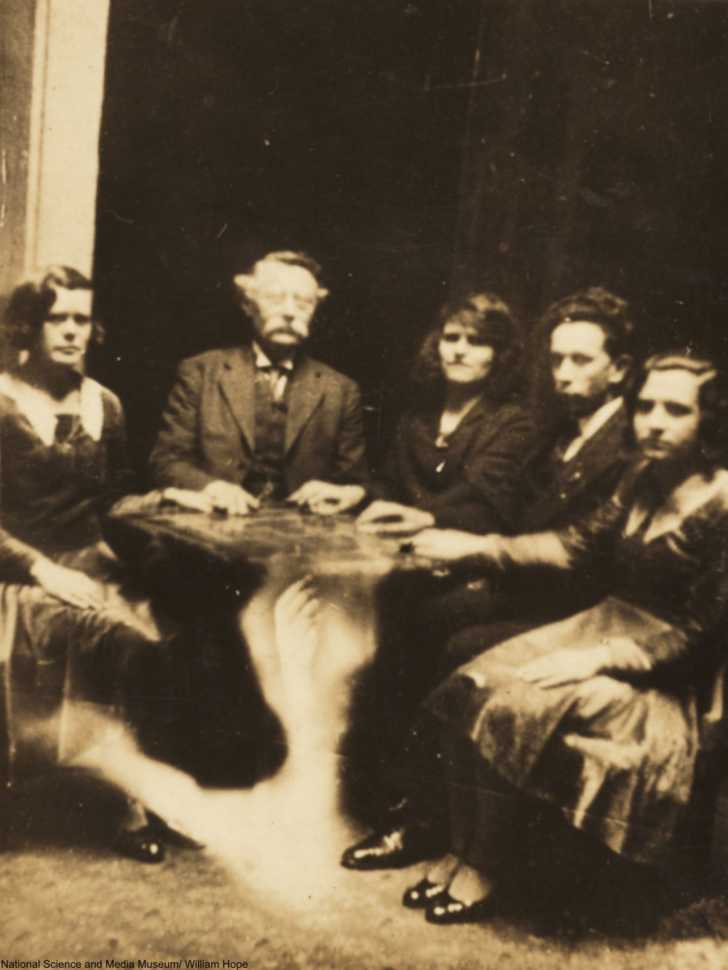
The Rise of Populist Spiritualism
Several factors contributed to the rise in popularity of psychics and mediums. The first was the groundwork that 18th century spiritualists like Franz Mesmer (from whence we get the word mesmerize) and Emanual Swedenborg had laid in creating a niche market for spiritualist services as suitable for respectable people.
The second factor was that the multitudes were desperate to have any shred of communication with their departed loved ones in an era when few people could expect to live beyond 50 and also after nearly everyone had lost a brother, son, father, or friend in the Civil War. The widespread grief of the nation was making its presence known in the desire for fringe explanations and mysterious messages – anything which might provide some link to the people they missed so much.
The Fabulous Fox Sisters
It’s not shocking that in an era when medicines were unregulated, food was not guaranteed to be safe, and children were not required to attend school that anyone with a claim might be entertained. Certainly traveling “doctors” selling tonics made of alcohol or snake oil were believed to have healing powers. So when 2 young ladies, sisters, set their minds to playing a trick on their mother, the deceit grew like wildfire among a population all too ready and willing to believe in the supernatural.

Kate and Margaretta (who went by the name “Maggie”) Fox had chosen the spring of 1848 to begin their “communications” with the dead through a series of coordinated tapping and thumping on walls in which numerical and yes/no answers were given to an astonished audience consisting of their mother and a neighbor.
What began as a gag quickly escalated into a regional phenomenon, spurred by the fact that the sisters moved shortly afterwards to an area where reform and Christian religiosity were rife, ideas not exclusive of channeling the dead at the time. In their new locale of Rochester, New York, the Fox Sisters performed their art for religious folks to great effect, now managed by their elder sister, Leah.
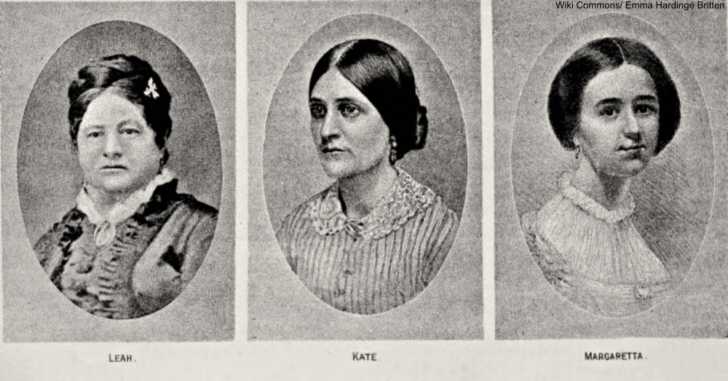
Over the next few years, the Fox Sisters were called on to perform in halls, in the homes of the wealthy, and to tour their skills. While Maggie dropped out of the séance scene at the request of her new skeptic husband in the mid-1850s, Kate continued on in various ways. Sadly, all 3 sisters were stricken with alcoholism and this contributed to the riffs that were growing between them.
Eventually Maggie took paid speaking engagements to reveal just how the sisters deceived their clients, a fact her sisters were none too keen on. Among their tricks were apples on strings to vibrate the floorboards and some surprisingly loud toe popping!
The Long Term Effect of the Fox Sisters
The ouija board was not far behind as a simplified version of the professional séance, in a size and shape that was easily stowed in the closet and enjoyable to even the very young. The game first appeared in the 1880s as homemade boards and was quickly marketed by the Kennard Novelty Company as wholesome family entertainment that also, you know, happened to be a link to the land of dead.
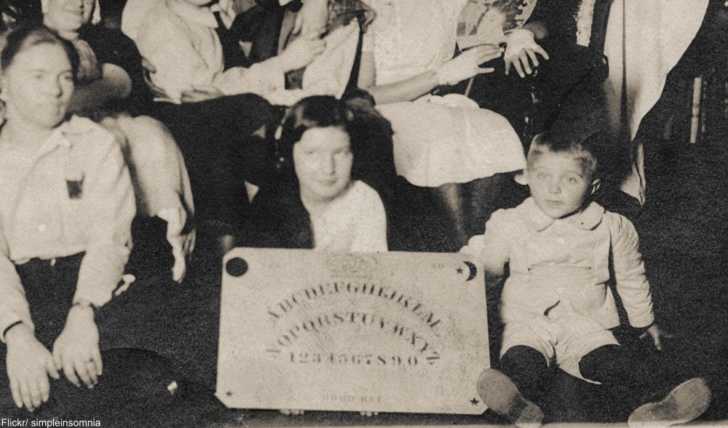
The great number of mediums and psychics, combined with the many claims that were being made about what they could accomplish led to another craze: debunking. One of the most famous debunkers was Harry Houdini. In addition to being an actor, escape artist, and magician, he put his great knowledge of slight of hand and stage tricks to the task by exposing the shady tricks of psychics.
As after the Civil War, the years following World War I saw a resurgence in spiritualism on both sides of the Atlantic as families attempted to speak with the dead.
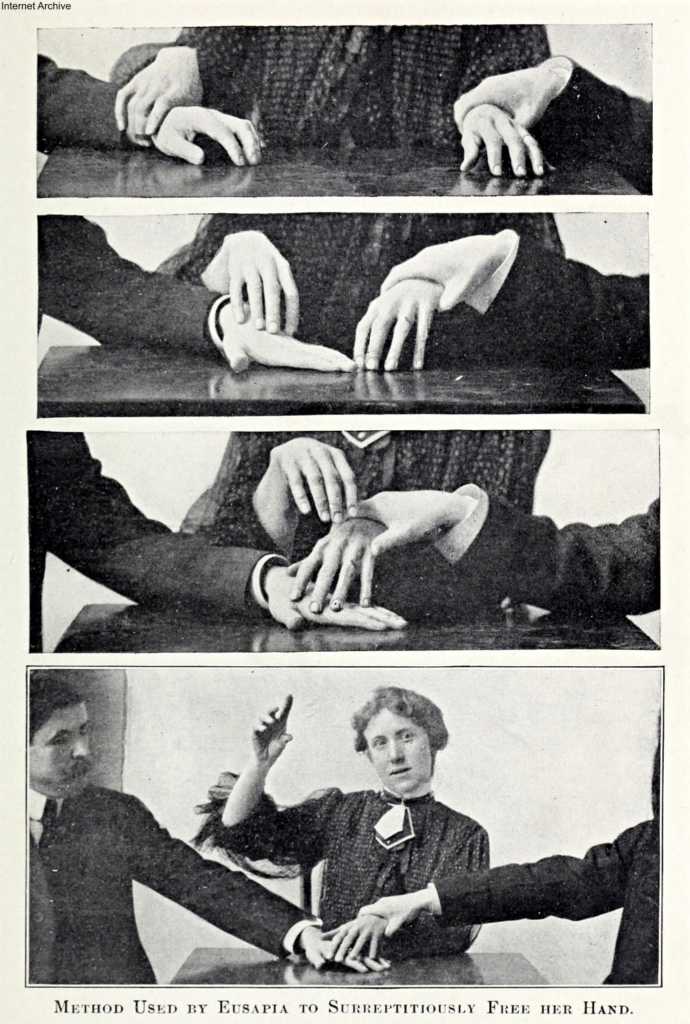
By the 1930s fewer and fewer people believed in the power of the séance to conjure the dead from their graves. Books outlining the deception practiced by mediums were soon giving away all their secrets to the public.
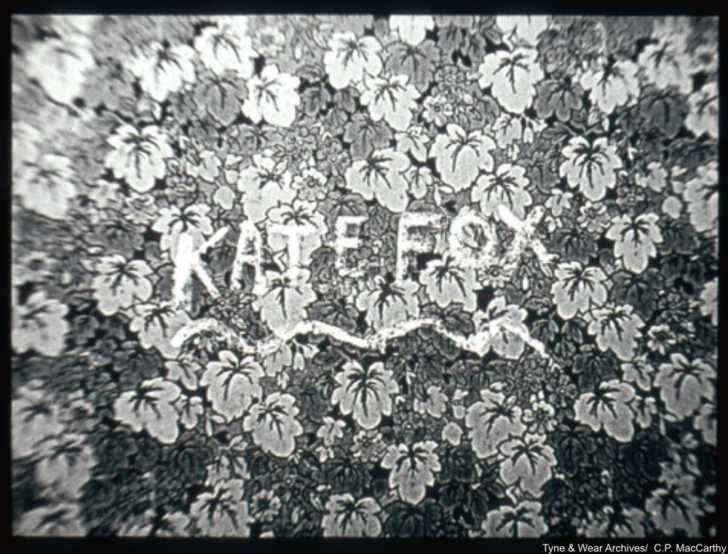
For a time during the Victorian era, the séance ruled as the supreme entertainment, and in some cases comfort, for droves of people seeking to speak to their lost loved ones. At the center of it all were the Fox Sisters, who sadly each died of alcoholism in the 1890s, penniless and long-deprived of their fame.
If you enjoyed this then click the “Next Page” button for a look at 19th century spirit photography!
SKM: below-content placeholderWhizzco for DOT

